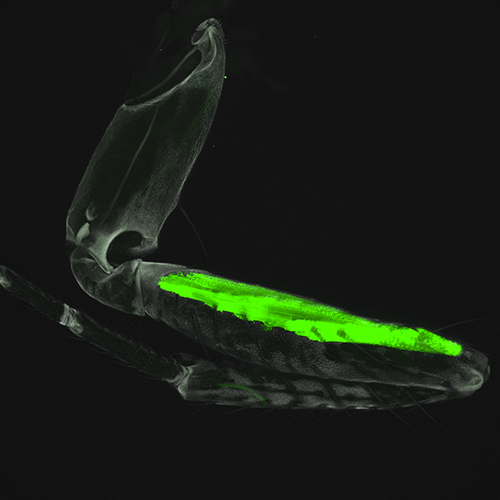Thesis defense: Camille Guillermin
| When |
Dec 11, 2023
from 02:00 to 05:00 |
|---|---|
| Where | Salle des thèses |
| Contact Name | Camille Guillermin |
| Attendees |
SOLER, Cédric / CR1 MCU / Laboratoire de Génétique Reproduction et Développement de Clermont-Ferrand / Rapporteur; BOUKHATMI, Hadi / CR / Institut de Génétique et Développement de Rennes / Rapporteur; RUGGIERO, Florence / DR1 / Institut de Génomique Fonctionnelle de Lyon / Examinatrice; DAVY, Alice / DR / Centre de Biologie Intégrative de Toulouse / Examinatrice; LEGRAND, Fabien / DR2 / Institut NeuroMyoGène de Lyon / Examinateur; ENRIQUEZ, Jonathan / CR1 / Institut de Génomique Fonctionnelle de Lyon / Directeur de thèse. |
| Add event to calendar |
|

On December 11st, Camille Guillermin of the team of Jonathan Enriquez will support his thesis entitled:
"Spatio-temporal control of muscle diversity in Drosophila leg"

Abstract:
Locomotion is a fundamental behavior in animals, crucial for finding food, mates, and avoiding predators. In appendages, precise movement relies on the unique muscle morphologies. Drosophila melanogaster stands as a remarkable model organism for untangling the complexities of muscle morphologies development. It offers a structural and developmental analogous model to vertebrates upper and lower limbs. The general molecular program of muscle development is well characterized in flies and vertebrates, but the specific program controlling muscle morphology diversity in appendages remains unknown. My thesis is organized around one problematic: Is there, in parallel with the general myogenesis program, a specific muscle program that governs unique muscle morphologies? During my thesis, I made a significant discovery regarding the genetic program that governs the morphology diversity of adult muscles. I used multiple approaches integrating genetics, confocal microscopy, single-cell sequencing, image post-processing and bioinformatic. My research findings reveal that myoblasts initially possess a naive state upon joining the epithelial cells of the leg disc (immature leg). During early stages, myoblasts are specified into two subpopulations. One population, located in the center of the disc, will give rise to distal muscles, while the other one, at the periphery, will generate proximal muscles. Then at later stages, myoblasts giving rise to the same muscle are specified and spatially cluster together in the region prefiguring the position of the muscle they will form. The analysis of the single cell sequencing perform at different stages highlights the potential genes controlling this specification. I was able to assign specific transcription factor codes, evolving over time, to the different myoblasts’ populations, and begin to analyze their functional role in shaping muscle architecture. This project has the potential to contribute novel knowledge and understanding of the intricate cellular and molecular mechanisms controlling muscle diversity.


